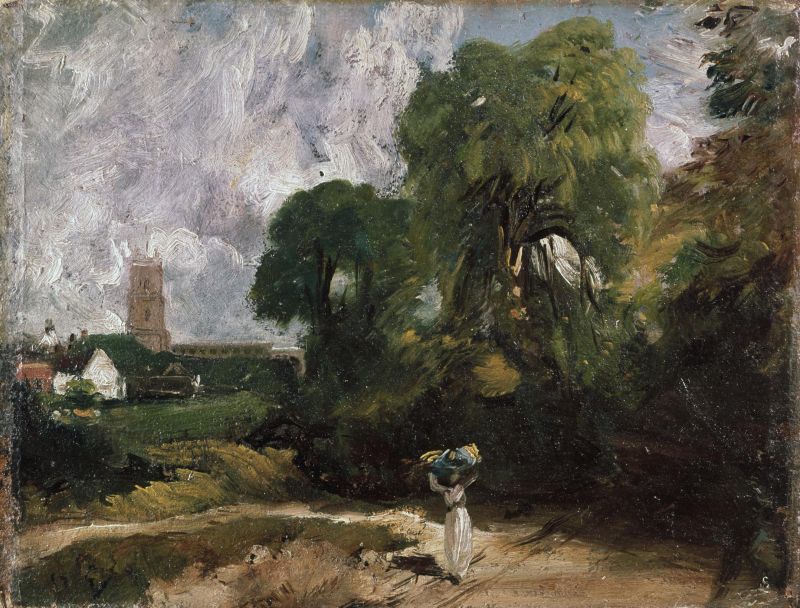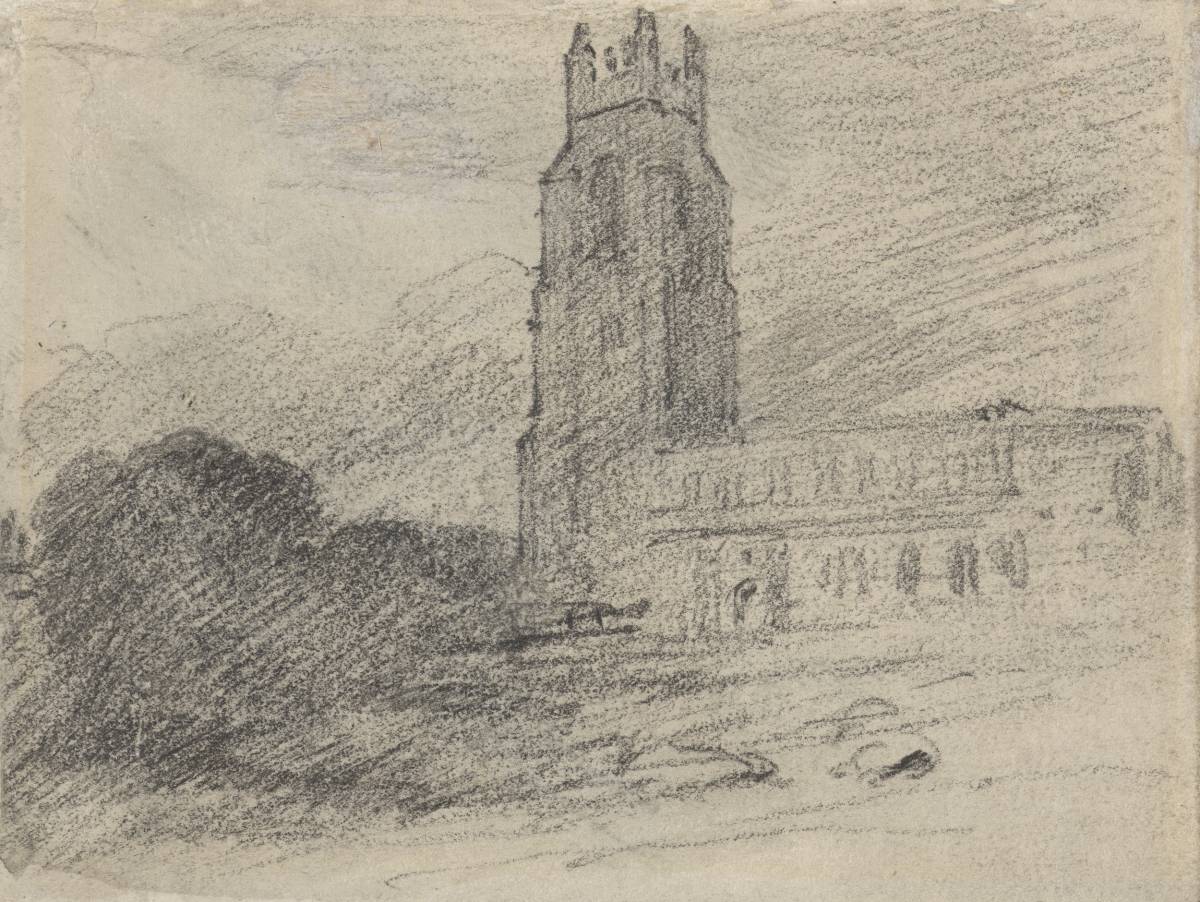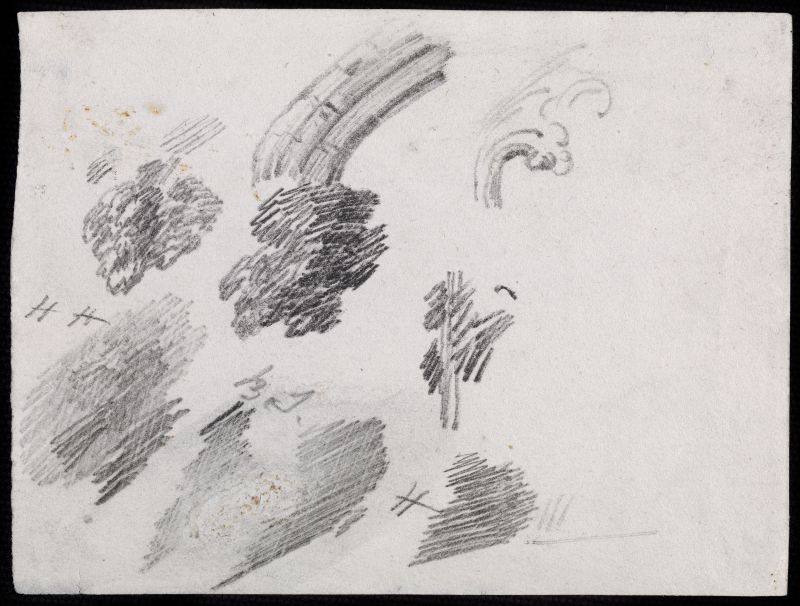This small, boldly worked drawing almost certainly comes from a dismembered pocket-sketchbook Constable was using during the Summer of 1814. The sheet shows the distinctive profile of St Mary’s Church, Stoke-by-Nayland, seen from the South-East.
Stoke-by-Nayland was a village situated across Dedham Vale from East Bergholt, Constable’s aunt, Martha Smith, lived in the village and Constable regularly visited sketching. In 1814 he wrote to Maria Bicknell of walking to Stoke: ‘my way was chiefly through woods and nothing could exceed the beauty of the foliage.’[1] The distinctive profile of the church, its west tower and bulky nave appear in a number of drawings and paintings by Constable. He made at least seven studies in the 1814 V&A sketchbook of the church and its setting.

John Constable
Stoke-by-Nayland, c.1830
Oil on paper
9 ¾ x 13 inches;248 x 330mm
© Victoria and Albert Museum, London, (150-1888)
The present drawing does not replicate any of his earlier studies, showing the church from the South-East close-to, cutting out a cottage that generally appears in the right foreground. Constable was at that moment struggling with certain elements of perspective in the recording structures, specifically the fact that parallel lines converge towards a vanishing point. In 1814 he made a drawing of Stoke-by-Nayland church using a tracing glass of his own invention to test this rule.[2] This suggests that Constable was considering producing a more finished view of the church, although it was not until towards the end of his career that it appears in a plate from the second part of English Landscape and in a six-footer which only survives in its full-sized sketch.[3] This beautifully preserved drawing was in the collection of Constable’s daughter, Isobel, suggesting that it formed part of Constable’s studio throughout his lifetime. On the verso Constable has tried out various hatched lines, evidently experimenting with a new pencil.
References
- Ed. R. B. Beckett, John Constable’s Correspondence: Early Friends and Maria Bicknell (Mrs Constable), Ipswich, 1964, , vol. II, p.134.
- For Constable’s use of a tracing glass see: Ian Fleming-Williams, Constable and his Drawings, London, 1990, pp.118-121.
- For a discussion of the composition see: Leslie Parris and Ian Fleming-Williams, Constable, exh. cat., London (Tate), 1991, cat. no.218, pp.380-381.

